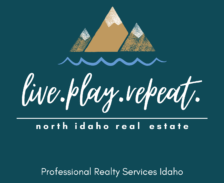Are you dreaming about a cozy cabin in the woods? How about an estate on acreage? Would you like a spot to call your own just on the edge of town with a little room between you and your neighbors? Or maybe you’re seeking a lot downtown among the action. A house is easy to identify, but the land surrounding it is a different story. As a responsible, soon-to-be land owner, you want to exercise diligence by understanding the parcel(s) you are offering to purchase. Here are some key steps toward land ownership from an expert in the field:
- Identify the type of land that you would like to own. How much acreage do you need? A small urban parcel? A vast stretch of land? Subdividable? Agricultural? What location suits your needs best? Waterfront? Remote? Just on the outskirts of town? Undeveloped city lot? Lot size and zoning matter if you have hopes of building, development, or other specific uses in mind.
- Once identified, make sure the parcel will adequately suit your needs. Will you need all utilities: water, septic or sewer, or electricity? Do you need year-round access? Breathtaking rural properties exist, especially in North Idaho, but not all of them feature these attributes. Some properties are too far out for power, so require “off-grid” living, which is becoming increasingly popular. Also remember, Idaho has all four seasons… meaning, you may have to operate a snow-plow to get out of your driveway during the winters!
- Will you be paying in cash or purchasing with a land loan? If utilizing a land loan, you’ll need to verify the property can meet your lender’s requirements. Some loans require access to utilities, or need estimates on costs to supply those utilities to the parcel. These loans may require a perc test if septic or sewer is not available on or to the property. You may also need to provide a well-driller’s report, a survey, and/or cost estimates from the electric company for connections.
- Is the subject property located within a Homeowner’s Association (HOA)? Make a point to study the by-laws, any association fees, and other guidelines or restrictions. These can usually be found in a document called Covenant, Conditions and Restrictions, or more often referred to as CC&Rs. Many times community water or sewer is offered, so be sure you investigate, to discover if this will work with any future building plans.
- Important: make sure you identify the correct property! Bare land is often not assigned an address, so properly identifying the parcel, while it sounds simple, confuses many newbie land buyers. A site like Zillow incorrectly marks bare land parcels because it derives location from known addresses. Here in North Idaho, I assist my clients by using corresponding county GIS interactive maps, which can be found online at county websites.
- Locate corners and boundaries if possible. Some lots have recently been surveyed, and in those cases, often the boundaries and corners have been “flagged,” or marked, by a surveyor. If not, many agents use the OnX hunting app to do this. This is a useful tool, but it’s also not always reliable. Rather, I use the county’s free records search online to find recorded plats, surveys, and legal descriptions of subject parcels. With these tools you can discover whether corners have been marked; and from those corners, the exact dimensions and directions (known as metes and bounds) can be used to most accurately locate the perimeter of the property.
An agent experienced in land purchases, as well as land development, is an invaluable tool. Not only will a knowledgeable agent guide you through the above process, but can also be a great resource for you down the road during the building phase. Valuable time and stress is saved through accurately identifying lots that fit your needs, allowing you to confidently acquire your dream property.

